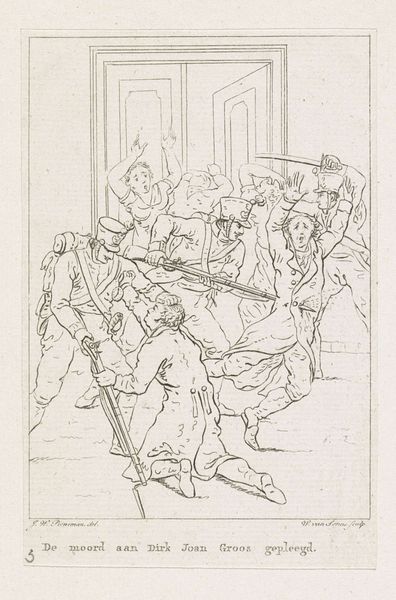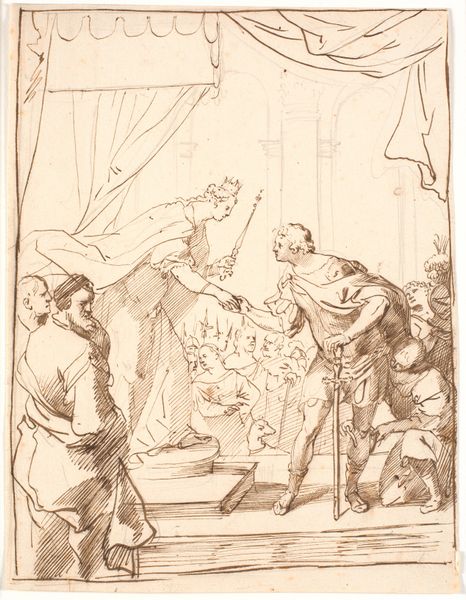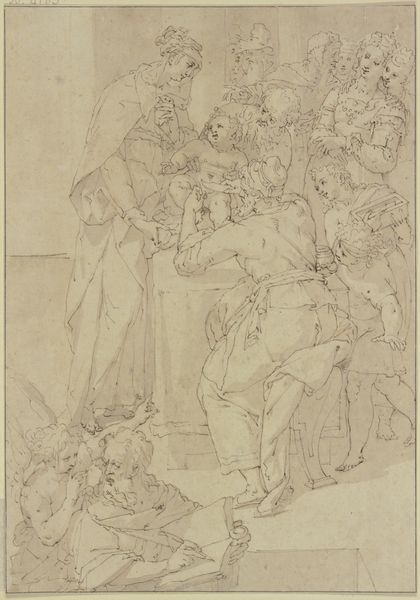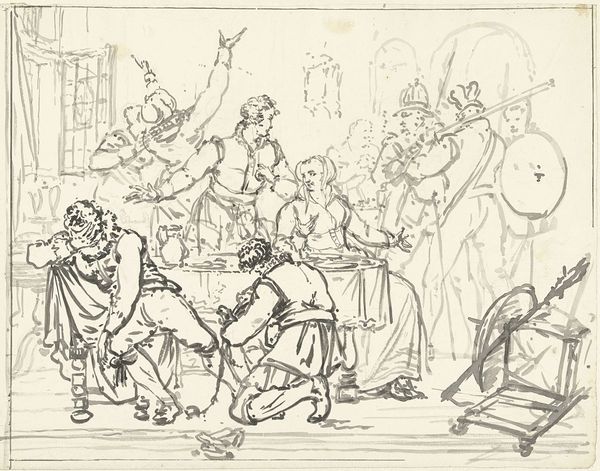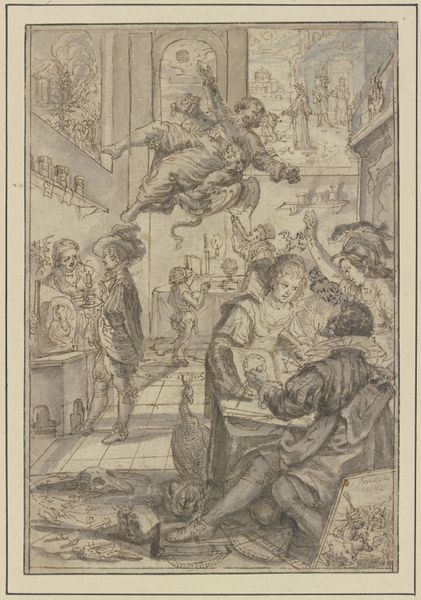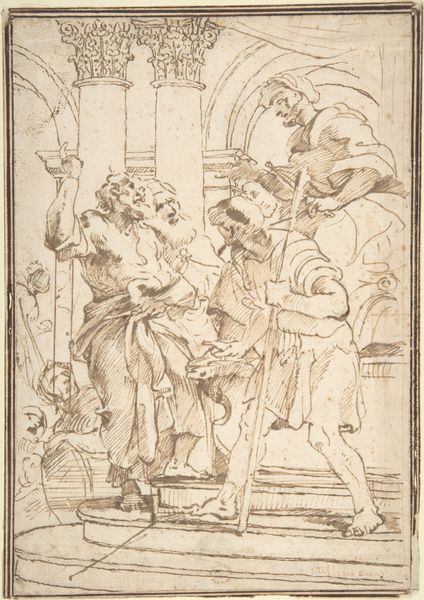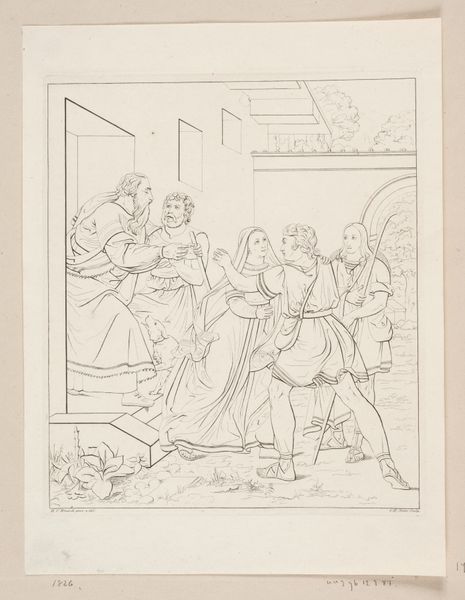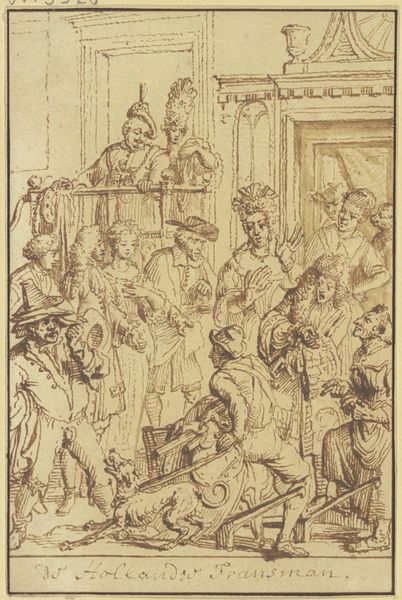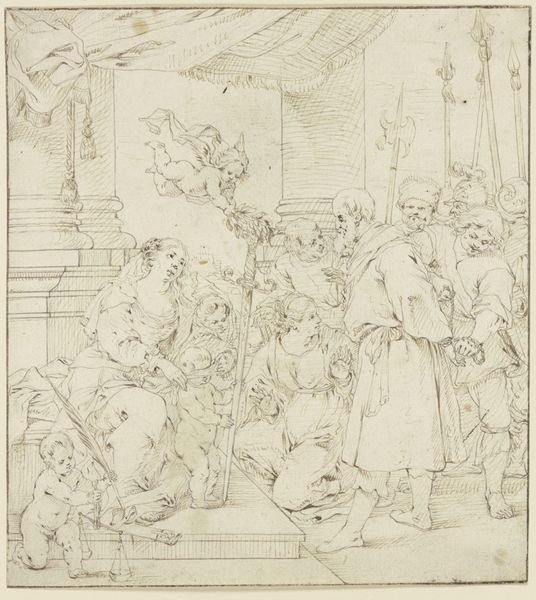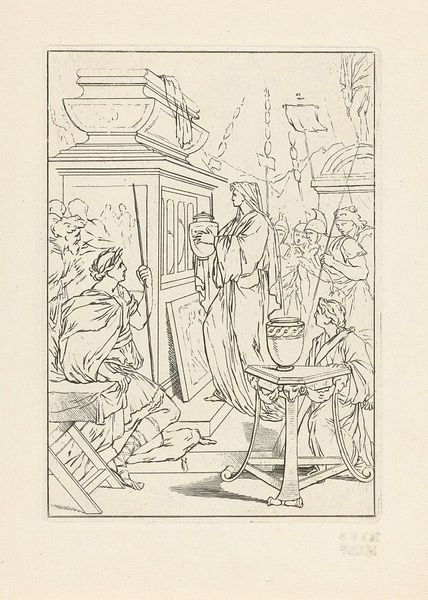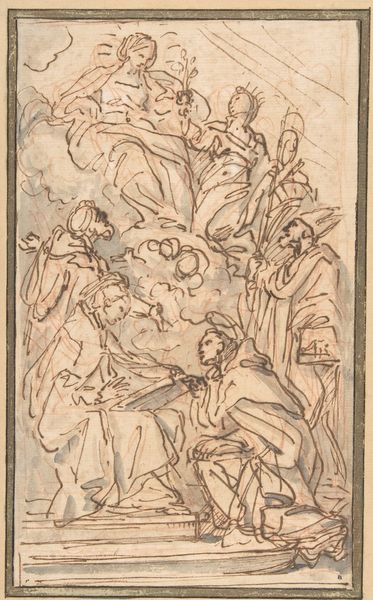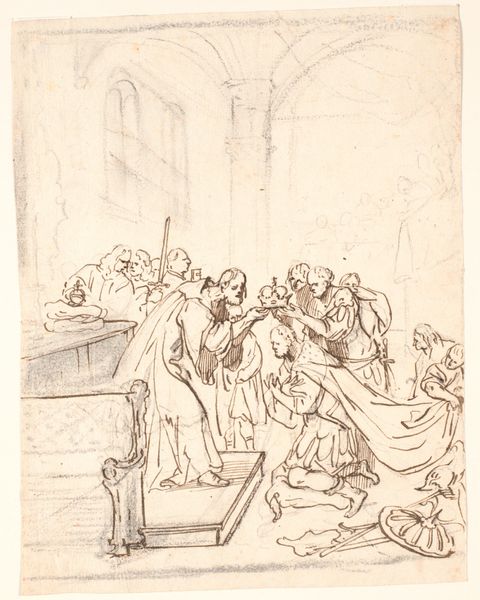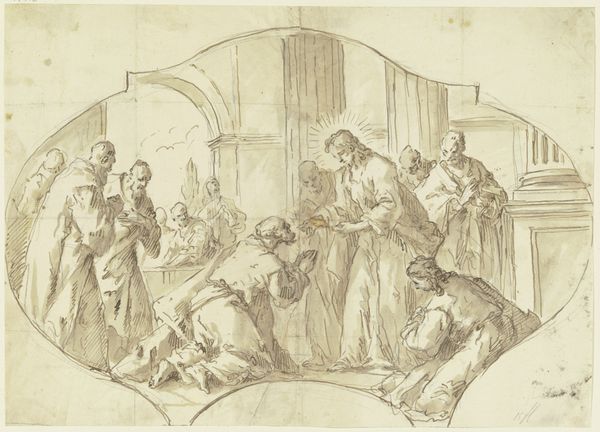
drawing, print, ink, engraving
#
drawing
#
narrative-art
# print
#
war
#
ink
#
romanticism
#
history-painting
#
engraving
Dimensions: height 143 mm, width 92 mm
Copyright: Rijks Museum: Open Domain
Curator: Here we have "Moord te Woerden op P. van Veen, 1813", a drawing, an engraving done in ink, made sometime between 1813 and 1814 by Willem van Senus. It is currently located at the Rijksmuseum. Editor: It strikes me as incredibly chaotic, even with its minimal lines. The eye is drawn to the center, but there is violence radiating outward in every direction. It depicts total terror. Curator: Indeed. It's a clear example of narrative art, depicting the tragic murder of Petronella van Veen. The piece offers a glimpse into the socio-political climate of the Netherlands during the Napoleonic era, specifically the impact of war. Editor: The presence of soldiers and weapons contextualizes the vulnerability of women and families during times of conflict, then and now. The visual construction positions Petronella van Veen as the epitome of victimhood, around whom her family collapses. How do we view this type of art within the legacy of war trauma? Curator: I agree. It reflects elements of Romanticism, with its intense emotions and dramatic subject matter, while functioning as history painting. One wonders how closely it aligns with historical accuracy, or if it amplifies events to serve particular ideological aims in its representation of power. Editor: Do we risk aestheticizing violence against women when it's placed within the historical painting genre, therefore solidifying existing power structures and oppressions? How might a feminist perspective inform how we look at this work? Curator: By critically analyzing it, questioning whose perspective it prioritizes, and acknowledging the artistic traditions in the sociopolitical backdrop that informed Van Senus’s rendering. Understanding the circumstances in which the artwork came into existence may help deconstruct what is normalized by representing violence and dominance in cultural artifacts like this print. Editor: This discussion underlines the necessity to examine historical art like "Moord te Woerden op P. van Veen, 1813", with attentiveness toward its historical setting and also contemporary resonance to confront the multifaceted narratives it evokes. Curator: Agreed. Bringing new ways to decode artwork may make the narratives contained more visible, encouraging thoughtful interaction that pushes understanding and growth.
Comments
No comments
Be the first to comment and join the conversation on the ultimate creative platform.
